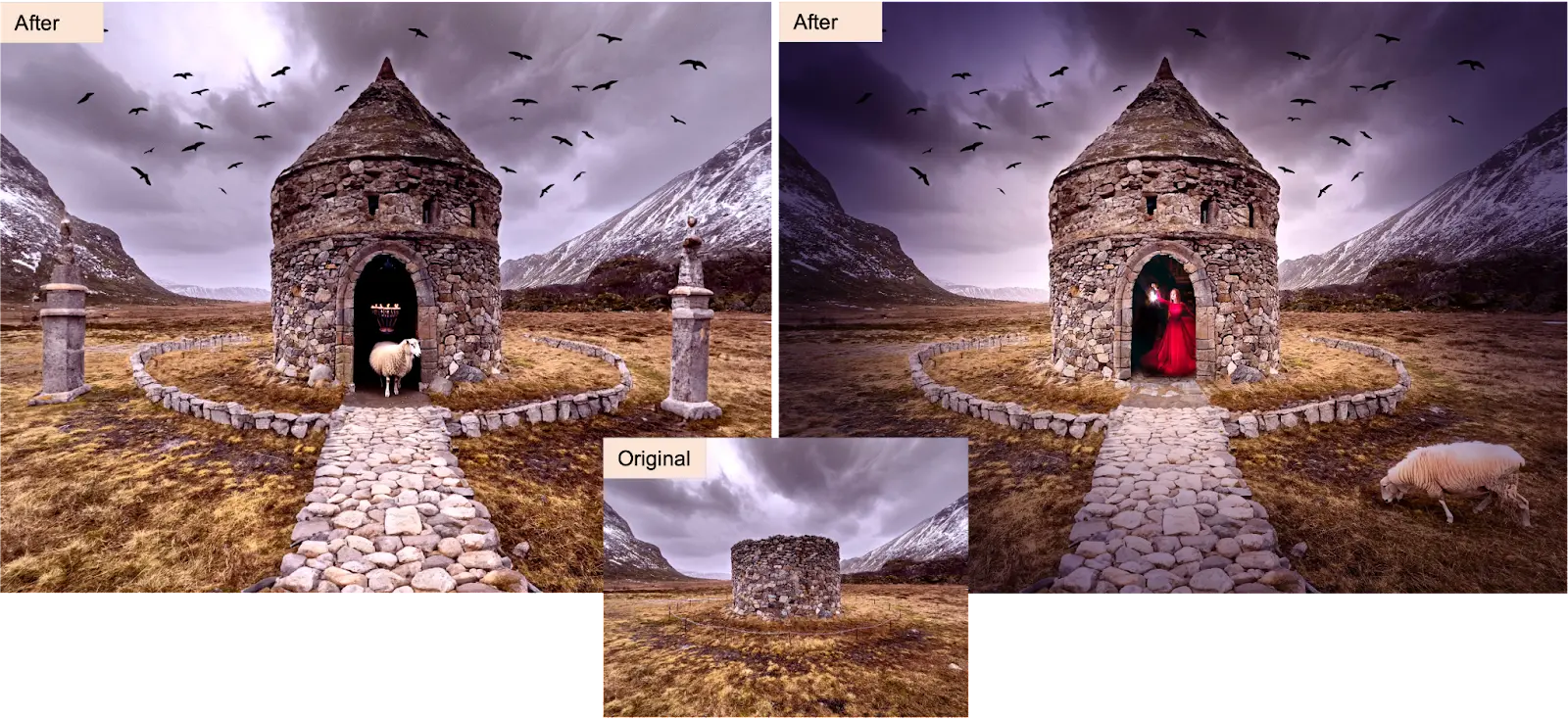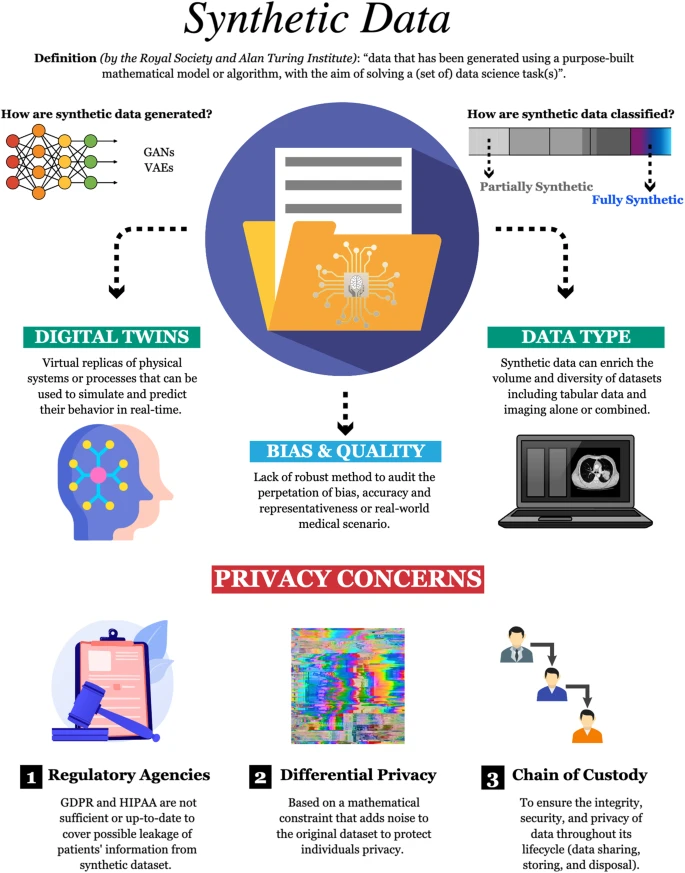Introduction
Computers are now performing tasks that once felt uniquely human - writing stories, generating images, even designing entire game worlds. The innovation driving this shift is generative AI, a technology that creates new content by learning patterns in existing data.
Neural networks are the foundation of most generative AI models. These computational systems learn from examples and recognise structure in data. Depending on their architecture, neural networks can detect patterns in language, images, and time-based sequences - making them essential to generative AI tools that create content across formats.
In particular, by adjusting internal parameters during training, neural networks can learn to map inputs to outputs, enabling models to generate realistic text, visuals, or audio based on what they have seen before. In this article, we’ll explore how neural networks support generative AI solutions, the different architectures involved, and how they are applied in real-world systems today.
What Are Neural Networks?
Many of today’s most advanced machine learning models are based on neural network architectures. Neural networks enable computers to identify patterns and make decisions based on input data. They are built using a series of layers - an input layer, one or more hidden layers, and an output layer. Each layer processes the information it receives and passes the result forward.
The structure of a neural network typically varies based on the complexity of the task it needs to handle. Shallow models, with fewer hidden layers, are usually suited for simpler problems. On the other hand, deep learning models have more hidden layers, which help them learn and process detailed patterns in more complex data. These deeper networks are often used for tasks like generating images or creating text.
However, a deeper network is not always more effective. In fact, some studies have shown that simpler, shallow learning models can perform just as well as deep ones, especially in situations where it’s important to understand how the model works or to keep it fast and efficient.

The Role of Neural Networks in Generative AI
Now that we have a better understanding of what neural networks are, let’s explore why they are so important in generative AI.
You can think of neural networks as the engine that powers generative AI. They’re what make it possible for generative AI models to learn from data and create something new - like writing text, generating images, or simulating conversations. Without them, these models wouldn’t have had a foundation for recognising patterns or producing outputs that make sense.
Before neural networks, many AI systems relied on rule-based approaches. These systems followed hand-coded instructions, if-this-then-that logic, that worked well for very specific tasks but couldn’t adapt or scale easily. They struggled with complexity and couldn’t handle the messy, unpredictable nature of real-world data.
Neural networks changed that by learning from examples instead of fixed rules. Early versions were shallow and limited to simple pattern recognition. However, as networks grew deeper, they could capture much more complex relationships in data, such as the structure of language, the features in an image, or the rhythm of speech.
This shift paved the way for generative AI models, which can create data. These models learn from huge datasets and generate entirely new content that follows the same patterns. That evolution, from rule-based systems to learning-based, generative models, is what makes today’s AI innovations so impactful.
Read more: Symbolic AI vs Generative AI: How They Shape Technology
Neural Network Architectures Under the Hood of Gen AI Models
So, what types of neural networks make generative AI possible? Let’s dive into the architectures behind these models.
Convolutional Neural Networks (CNNs)
While basic neural networks treat all input data as one-dimensional, CNNs are designed to work specifically with image data by recognising spatial structure. They are a specialised type of neural network used for computer vision tasks like object detection and image classification.
Generally CNNs process digital images by scanning them in small sections. Each section passes through multiple filters, which help detect patterns such as edges, shapes, and textures. As the data moves through the layers, the model builds a layered understanding of what it sees.
Generative Adversarial Networks (GANs)
Another well-known architecture in generative AI is the Generative Adversarial Network, or GAN. It is a type of model built using neural networks and designed specifically to generate new, realistic data.
GANs consist of two neural networks that work in opposition: a generator and a discriminator. The generator creates new data samples, such as images, by learning patterns from training data. The discriminator evaluates these samples, compares them to real examples, and tries to determine whether they’re genuine or artificially generated.
Both models improve together through a feedback loop. The generator gets better at producing convincing samples, while the discriminator gets better at spotting fakes. This back-and-forth process, known as adversarial training, continues until the generator becomes good enough to produce data the discriminator can no longer reliably distinguish from real input.

Large Language Models (LLMs)
With the rise of ChatGPT and similar tools, Large Language Models have brought generative AI into everyday life. At their core, LLMs are built on neural network architectures, specifically a type called transformers. These deep neural networks are designed to process language by learning the structure, context, and relationships between words in large datasets.
LLMs are trained on massive amounts of text and can generate long, coherent passages, answer questions, and engage in conversation that feels natural. Tools like Google Bard and Claude rely on these models to help users write content, summarise information, and complete everyday language tasks.
Long Short-Term Memory (LSTM)
So far, we’ve looked at neural network architectures that are great at working with images and text. Now let’s explore another important kind: LSTMs. These networks are designed to handle sequences and time-based data.
LSTM networks are especially useful when the order of information matters. They can remember important details from earlier in a sequence and use that context to make better predictions. This makes them a good choice for tasks like speech recognition, time series forecasting, and language translation.
What makes LSTMs different is their built-in memory system. At each step, they decide what information to keep and what to forget. This helps the network stay focused on what’s relevant, even in long or complex sequences.
Training Generative AI Models
Using a reliable neural network–based architecture is just the first step in building a generative AI model. To actually utilise the model, it needs to be trained so it can learn how to turn inputs into meaningful outputs.
Most generative AI models are trained using supervised learning. That means the neural network is shown lots of examples where the correct answer is already known. As it works through these examples, the model adjusts its internal settings, called weights, to improve its predictions. Over time, it gets better at spotting patterns and can start generating useful results from new data it hasn’t seen before.
The quality of the training data makes a big difference. Clean, well-labelled, and diverse datasets help the neural network learn the right information. If the data is messy, biased, or unbalanced, the model can end up learning incorrect things or producing poor results.
Training generative AI models also takes a lot of time and computing power. With millions, or even billions, of parameters to adjust, the process involves running the model through the data many times. That’s why computing hardware like GPUS (Graphics Processing Units) is often needed to handle the workload and speed up training.
GPU Acceleration Enhances Model Training and Inferencing
Training generative AI models takes a lot of computing power. It involves processing massive amounts of data and updating millions of internal parameters at once. Because there’s so much happening at the same time, many operations need to run in parallel to keep things efficient.
Standard CPUs aren’t really built for this kind of workload. While they can handle a few tasks at once, they’re mainly designed to do one thing at a time, but do it well. That’s why AI models are typically trained on GPUs, which are designed to handle thousands of calculations in parallel and speed up the entire process.
Specifically, with respect to generative AI, GPU acceleration can reduce training time from weeks to a few days, helping teams test and improve models more quickly. On top of this, GPUs play a crucial role during inference (the stage where a trained model is used to generate outputs in real time). Whether it’s responding to a user prompt in a chat assistant, generating an image from a text description, or helping a smart device make quick decisions at the edge, fast and efficient inference is key.

Practical Applications of Generative AI and Neural Networks
Neural networks and generative AI models are now being used in different real-world applications. Let’s take a closer look at some of the key areas where they’re making an impact.
Supporting Computer Vision Applications
Generative AI is changing the way machines interpret visual information. It helps improve computer vision tasks like object detection, image classification, segmentation, and even fixing damaged or low-quality images.
One of the most useful tools in this space is synthetic data generation. When collecting real-world images is difficult or expensive, tools like NVIDIA Omniverse Replicator can step in. Replicator creates realistic, computer-generated images that are automatically labelled and ready to train neural networks. This is especially helpful for building models that require a lot of training data, such as those used in self-driving cars, robotics, or video analytics.
Because everything in a synthetic scene is controlled, developers can simulate rare events or edge cases that might be hard to capture in real life. This gives AI systems more variety to learn from and helps them perform better in unpredictable situations. Overall, synthetic data gives computer vision models a smarter, safer, and more cost-effective way to learn.

More Immersive Video Games
Generative AI is helping game developers create more dynamic and engaging experiences. One way it does this is through procedural content generation, where AI is used to build game worlds, maps, and other elements automatically.
A great example is No Man’s Sky, a game that uses AI to generate entire planets, landscapes, and ecosystems on the fly. Instead of designing every detail by hand, developers can let AI models create vast, unique worlds for players to explore.
Beyond environments, studios are now experimenting with large language models to make in-game conversations feel more natural. These models can help non-player characters (NPCs) respond in smarter, more human-like ways, making games feel more immersive and lifelike.

Read more: Generative AI in Video Games: Shaping the Future of Gaming
Content Creation
Producing content quickly and at scale has become a key priority for many organisations. Generative AI supports this need by enabling the use of text-based models to write product descriptions, blog posts, and reports with reduced manual effort and faster turnaround.
At the same time, visual generation tools like Adobe Firefly make it possible to create images and videos from plain text prompts. These tools interpret simple instructions to produce detailed, relevant visuals.

Healthcare
Privacy and limited access to real-world data are common challenges in healthcare. Generative Adversarial Networks help address this by creating synthetic medical data, including X-rays and MRIs. These artificial images support the training of diagnostic models without exposing patient information.
By using synthetic datasets, researchers can improve model accuracy and expand access to rare cases. As a matter of fact, recent studies showcase that such approaches support safer, more effective model development in clinical research and medical AI applications.

Read more: Generative AI in Medical Imaging: Transforming Diagnostics
The Connection Between Generative AI and the Edge
Generative AI plays a behind-the-scenes role in edge computing. Models like GANs are used to create synthetic training data when real-world examples are hard to find, which helps improve the performance of models like CNNs in areas like agriculture, robotics, and manufacturing.
However, GANs aren’t typically deployed on edge devices like drones or sensors because they require too much computing power. Instead, a lighter model, usually a CNN, is trained using the synthetic data and then installed on the device. This supports fast, on-device decision-making, reduces the need for cloud access, and keeps data more private.
Challenges in Scaling Generative Neural Networks
As generative AI models continue to grow in size and complexity, they also pose a range of technical, ethical, and operational challenges to consider. Here are some of the main concerns faced by teams working with large generative AI models:
-
Data Bias: Models learn from the data they’re given, so unbalanced datasets can lead to biased results. Careful curation and diverse data sources are key to better outcomes.
-
Interpretability: It’s often hard to explain why a model outputs what it does. New tools for explainable AI are helping make these systems more transparent.
-
Content Safety: Realistic AI-generated content can be misused. Solutions like content watermarking and detection tools are emerging to promote responsible use.
-
Privacy and Data Use: Using real-world data comes with privacy concerns. Techniques like anonymisation and federated learning are helping keep data secure.
How TechnoLynx Can Help
At TechnoLynx, we focus on turning AI from concept to reality. Our team has hands-on experience with technologies like computer vision, generative AI, and edge computing, and we love solving tricky technical challenges.
Whether you’re building something new, improving an existing system, or exploring how AI can fit into your business, we’re here to help. From research and prototyping to deployment and optimisation, we’re comfortable working across the entire development process.
We also offer a range of services, including R&D outsourcing, custom software development, optimisation, MLOps, and business technical analysis, among others, tailored to meet your specific goals. What sets us apart is our practical approach and focus on collaboration. We work closely with your team to build solutions that are not just technically strong but also grounded in your real-world needs. If you’re looking for a partner who knows AI and gets things done, we’d love to work with you.
Read more: Generative AI vs. Traditional Machine Learning
Wrapping Up
Neural networks are central to how generative AI models process data and produce outputs. These models facilitate applications such as content generation, image synthesis, and multimodal automation. As technology continues to evolve, the possibilities for building smarter, more adaptive systems grow every day.
Whether you’re exploring generative AI for the first time or looking to scale an existing solution, having the right expertise makes all the difference. At TechnoLynx, we work with teams who want to move these AI concepts into production. If you are thinking about building something or improving what you already have, reach out to us today!
Continue reading: Neural Networks and Their Role in Generative AI
Sources for the Images
-
Dr. Peter Bentley, 2023. How do machine learning GANs work? Science Focus
-
Julos. n.d. Abstract background of a cyclist design. Freepik
-
Mauro Giuffrè & Dennis L. Shung, 2023. Highlights on Synthetic Data and Their Application in Healthcare Research. Nature Digital Medicine
-
NVIDIA Developer, 2024. Theory Behind Training with Synthetic Data. Omniverse Replicator
-
Oliver Dürr, Beate Sick, and Elvis Murina, 2020. Neural Network Architectures. From Probabilistic Deep Learning with Python. Medium
-
Pam Clark, 2023. Dream bigger: Get started with Generative Fill, powered by Adobe Firefly Generative AI, now in Photoshop. Adobe Blog
-
Rebecca Cairns, 2023. ‘Video games are in for quite a trip’: How generative AI could radically reshape gaming. CNN
-
Xpresso AI, 2021. The Difference Between AI Training and Inference. Medium
References
-
Chang Sun & Michel Dumontier, 2025. Privacy-Preserving Synthetic Medical Data Generation. Nature Digital Medicine
-
NVIDIA Developer, 2024. Omniverse Replicator Documentation
-
Sarah Parvini, 2024. Ubisoft explores generative AI for game development. Associated Press.
-
Steven Yeung, 2025. The Role of Neural Networks in Generative AI Systems. ACM CHI Conference on Human Factors in Computing Systems. ACM Digital Library
-
Yuval Meir, Ofek Tevet, Yarden Tzach, Shiri Hodassman, Ronit D. Gross & Ido Kanter, 2023. Shallow deep learning: Shallow architectures for monocular depth estimation. Scientific Reports. Nature













